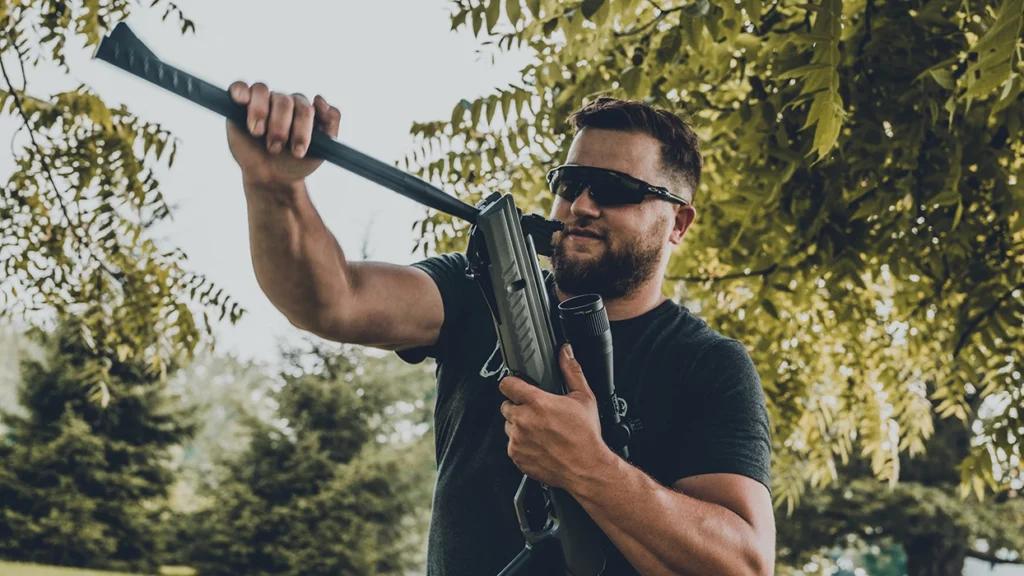What is an air gun? Although modern air guns differ markedly from early versions, the basic principles utilized in the construction of air guns have been employed for centuries. The essential feature is that compressed air is stored in the gun until the time of firing. When the trigger is pulled, the gas is released behind the projectile which propels it down the barrel.
The major difference between types of air rifles is how the air is compressed and where it is stored. But what is an air gun from the past, and how does it differ?
Early Air Rifle Design
What an air rifle is hasn’t changed much. Some of the early air rifles had a reservoir in which air compressed by use of an external pump was stored. In some cases, this was in the rear section of the stock, and in others a hollow sphere located below the action. Part of the air could be discharged behind a projectile to drive it forward.
Some of the early air rifles utilized projectiles of .30, .35, or even larger caliber. Air rifles of this type were used in Europe in the late 1500s, and Lewis and Clark took such an air rifle on their historic Voyage of Discovery in 1804-1806!
Production of American BB guns began in the late 1800s. But what was different about an 1800s air gun? Most of these low-powered models were cocked by some sort of lever which pulls back a piston against a spring. In some cases, the piston was little more than a washer with a leather collar that made the piston have an almost air-tight seal inside the barrel. At the time of firing, the piston was pushed forward by the spring to compress air behind the BB, which projected it out of the barrel. Most such guns were low in power and were used for recreational shooting and pop can punching.
What an Air Gun Actually Is
But from a technical point of view, what is an air gun? Well, any gun that launches projectiles utilizing compressed gas rather than producing gasses burning a propellant (powder) is considered to be an “air” gun. In some cases, the propelling gas may be carbon dioxide, in which case the gun is actually a “gas” gun, but the term “air gun” is still generally applied to them. One of the great American air gun designs is the multi-pump (sometimes called a “pump up” gun) in which air is compressed by a series of pump strokes.
When the gun is fired, the compressed air enters the breech behind the projectile driving it forward. This type of rifle has been produced for well over a century, and with a maximum number of pump strokes, some of these rifles are powerful enough to be useful tools in hunting.
If you’re looking deeper into what an air rifle is, another popular type of powerful air rifle you should know is the break action air rifle (also known as the spring piston or break barrel). With this type of air rifle, the barrel functions as a lever that is pulled downward to force a piston inside the receiver backward by means of a linkage. This moves the piston to the rear as it compresses a strong spring or, as in the case of the Nitro Piston®, a gas. At the moment of firing, the piston that compresses the air is driven forward by the spring which compresses air behind the pellet driving it down the barrel. Other variants of this design utilize a lever along the side of the rifle or under the barrel as the cocking lever.
Beyond just asking what an air gun is, you may also be interested in the power behind these products. About half a century ago, Crosman Corporation pioneered the use of a small cylinder that contained compressed carbon dioxide (CO2) as the power source in pellet rifles. Known as the Crosman Powerlet®, each cylinder holds 12 grams of CO2 and that amount is sufficient to fire a considerable number of shots simply by cocking the rifle and loading a pellet. This characteristic is shared with the PCP rifles in which a reservoir holds enough compressed air for firing several shots.





